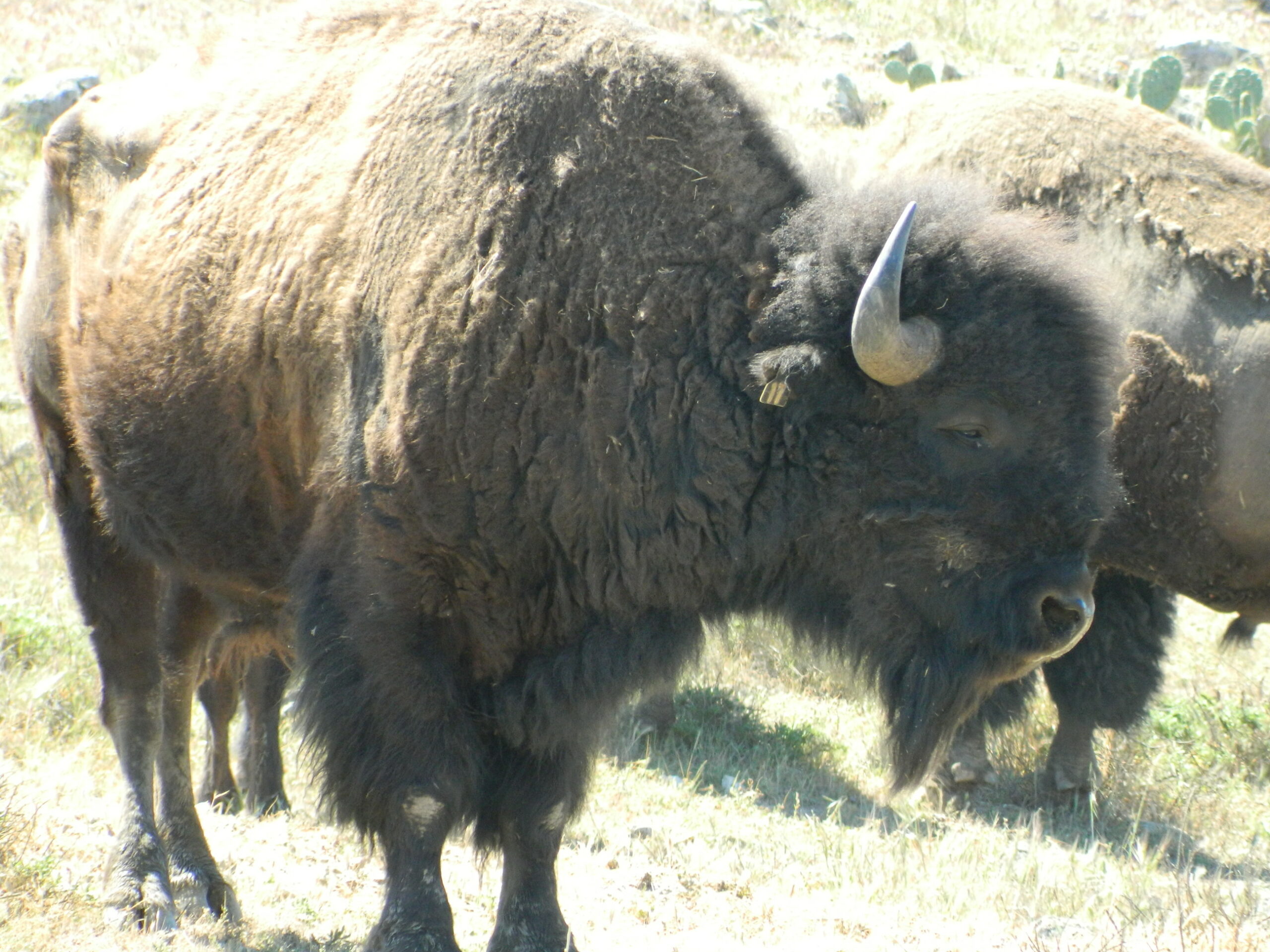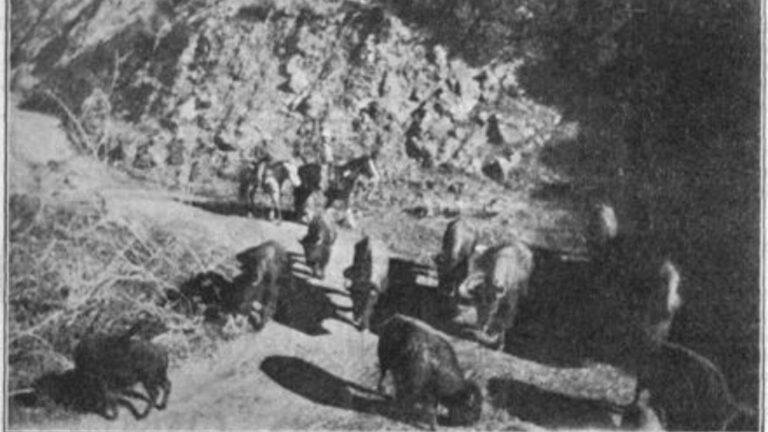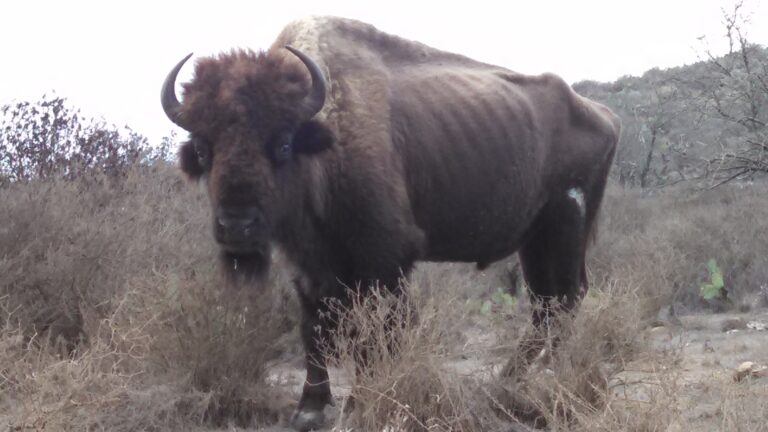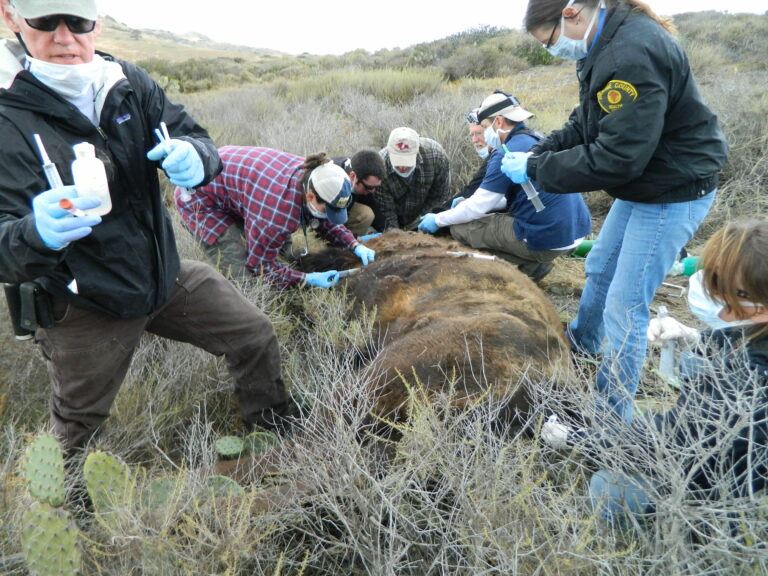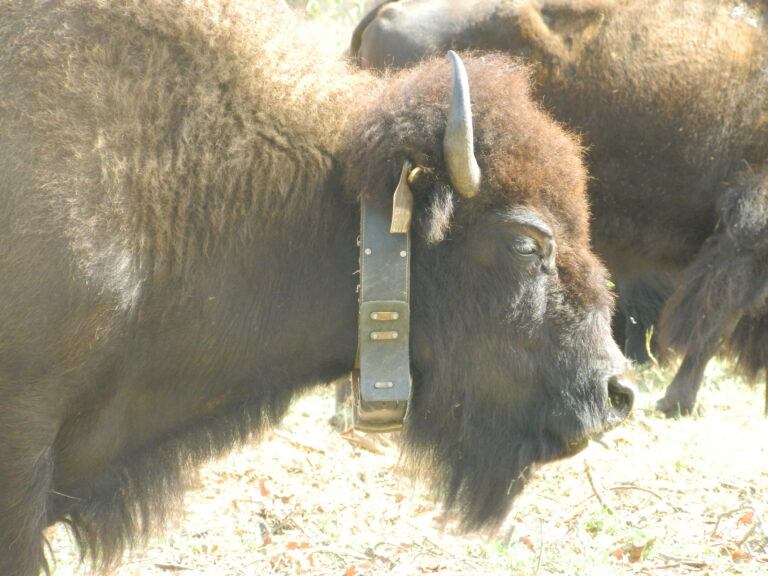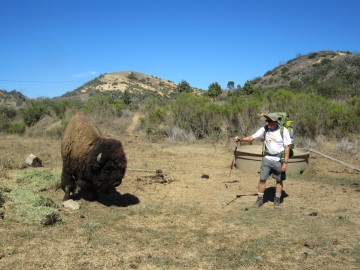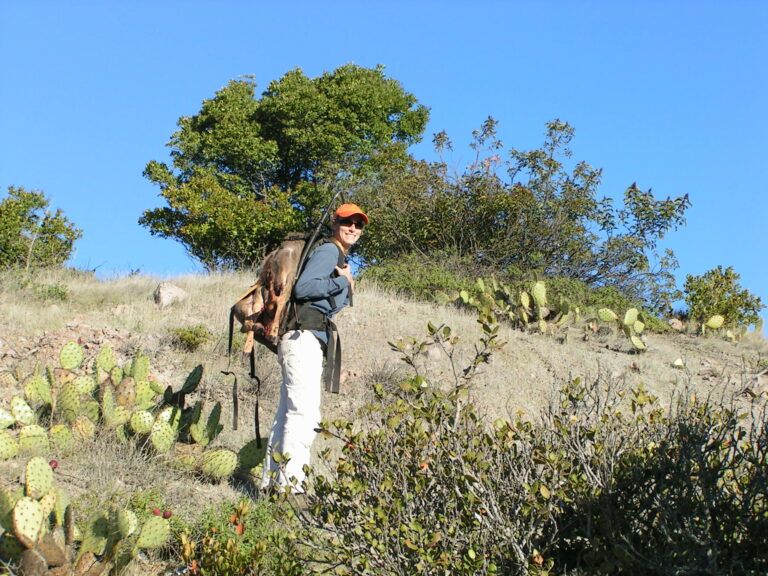How Long Do Bison Live on Catalina Island? Cutting Through the Bullshit.
According to the U.S. Department of the Interior, the lifespan of an American Bison is 10-20 years, with some living up to 25 years in captivity. So why do some representatives from the Catalina Island Conservancy claim that bison on the Island live into their 30s and even 40s?
Does the island of romance hold the secret to extended life, or is there an ulterior motive to the Conservancy’s efforts to mislead the public into believing that the bison are “Healthy and Happy” on Catalina Island?
Bison Exist as Wildlife, Livestock, and Captive Animals
Bison are unique in that they occur as wildlife, livestock, and captive zoo specimens, and their lifespans can vary considerably in each environment. Longer lifespans are often recorded in animals living in captivity due to their access to abundant resources and protection from predators, disease, and harsh climates.
Large, gregarious animals with complex social structures, like elephants and bison, don’t always do well in isolation or confinement. Still, they tend to live longer when their basic needs are met, and other stressors are kept at bay.
In many ways, the bison on Catalina Island exist in all three scenarios. They are owned as livestock but free-ranging and unhandled like wild bison. There are no predators or bovine diseases such as brucellosis on the island, and aside from periods of prolonged drought, the island’s climate is relatively mild. Water resources are generally well maintained, and occasional supplemental feeding is provided when drought conditions persist.
The Longest Living Bison on Record
According to Richard Weigl, the author of Longevity of Mammals in Captivity: From the Living Collections of the World, the record for bison longevity belonged to a male still alive at 33.3 years.
According to the National Park Trust, the oldest bison ever recorded was a bull that was 30 years old at San Francisco’s Golden Gate Park. Since the herd has been all female since 1997, in more recent news, an unnamed bison cow that lived to be 30 years old at the park was euthanized in 2013 because she could no longer stand on her own.
Another geriatric bison cow in the Golden Gate herd passed away in 2014 at the age of 22 and had been listed as the oldest remaining cow in the paddock.
Cutting Through the Bullshit
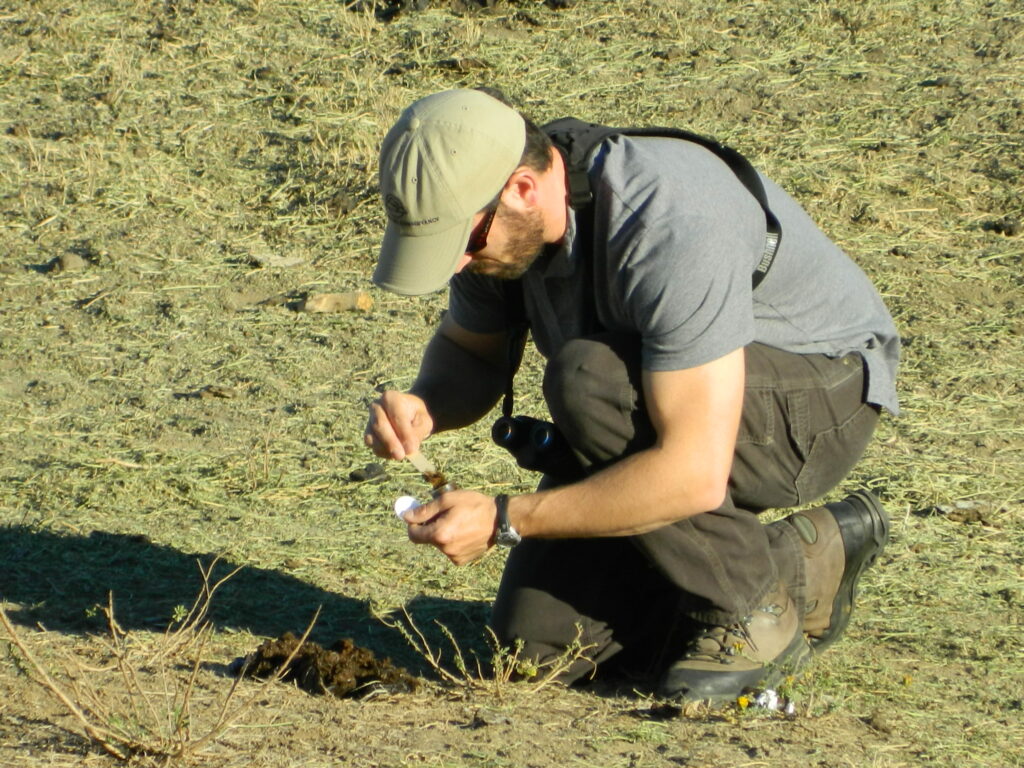
In multiple news articles, the Conservancy’s prior CEO, Tony Budrovich, has stated that the bison on the Island “live longer than anywhere else in the country” and that “nearly a dozen bison have lived more than 30 years”.
Lauren Dennhardt, the Conservancy’s current director of conservation, has also recently stated that bison on the island can live to be 40.
There is no evidence to support these claims, and they are obviously false, so why continue making these misleading statements?
Before and during my 13 years working as a wildlife biologist on the island and assisting in managing Catalina’s bison herd, the Conservancy worked to control the narrative associated with the bison. A research paper detailing the poor health of the bison was, as I understand it, silenced in 2003, and panic ensued when genetics testing confirmed that nearly half of the island’s bison had cattle genes.
For decades, the Conservancy had promoted the bison as healthy, happy, wild, and genetically pure. In my opinion, they have downplayed the bison’s impacts on the environment, embellished their draw for tourism, and even denied owning the animals in response to multiple bison goring incidents.
Recommendations to provide consistent food and supplements to the herd, as is common practice with cattle throughout the state, have been repeatedly denied, partly because of the expense but mainly because it would interfere with the perception that the island’s bison are wild and free.
How Old Are the Bison on Catalina Island?
Bison ages on the island have been estimated primarily by examining horn growth and wear. This common approach can be somewhat accurate during the first few years of development but can only estimate age ranges, such as greater than 12 years old, during the latter years.
Nutritional stress and the routine documentation of brittle and prematurely worn and broken horns among Catalina Island bison further diminish the accuracy of this approach, leading to an overestimation of ages.
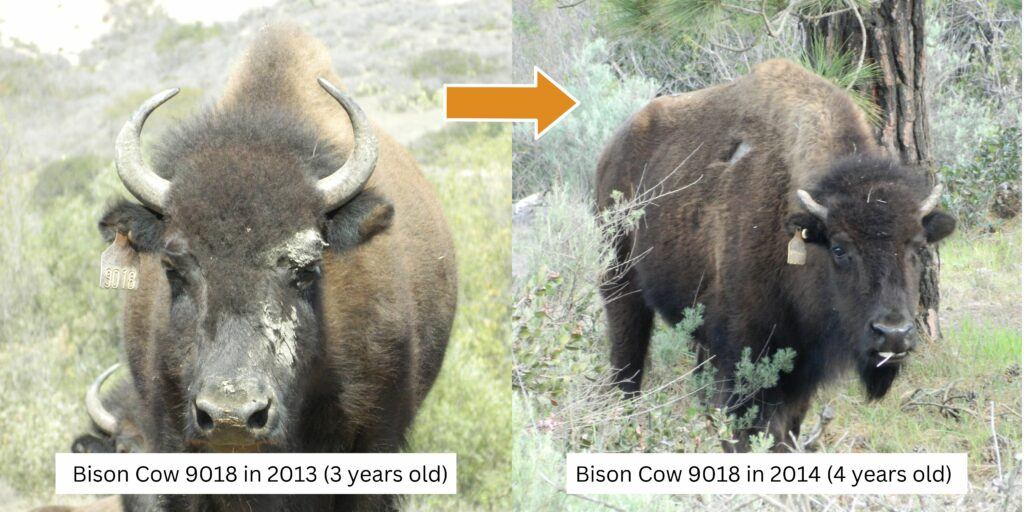
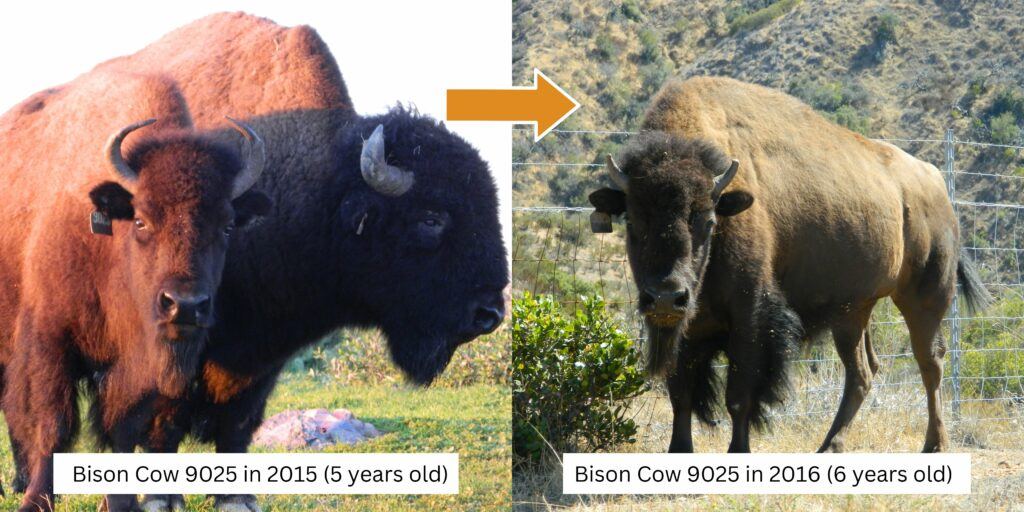
There have been no instances on the island in which a bison or multiple bison were uniquely marked at a known age and confirmed to have lived for more than 20 years.
Marking the bison with ear tags and accurately tracking their ages only began in 2009, with the initiation of the contraception program, and even the oldest estimated individuals monitored during the program did not live beyond their early 20s.
Any individuals previously tagged for other research or management purposes were either not of known age or their time of death was not documented.
Due to nutritional stress and the persistent drought conditions on the island, bison are more likely to live shorter lives on Catalina and, at best, may have lifespans similar to wild bison that occur in other areas.
To claim otherwise is either ignorance or deliberate misinformation, aka bullshit.
Thank you for visiting WildlifeDetections.com. Check back often for new content or subscribe to my newsletter to receive updates on new articles, and if you have enjoyed this post, please don’t hesitate to share.

